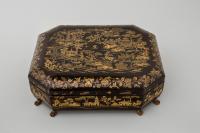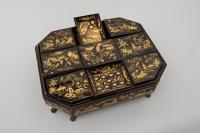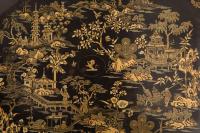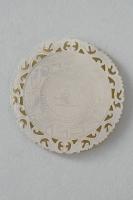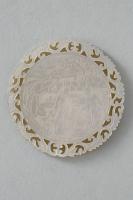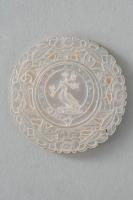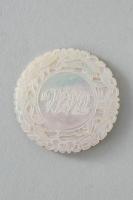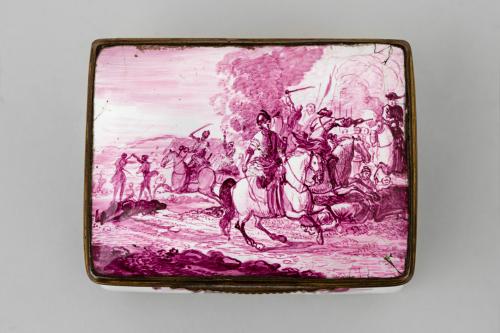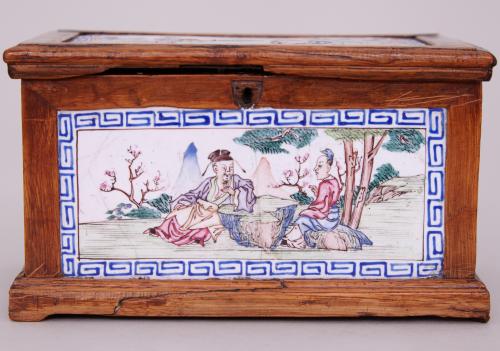
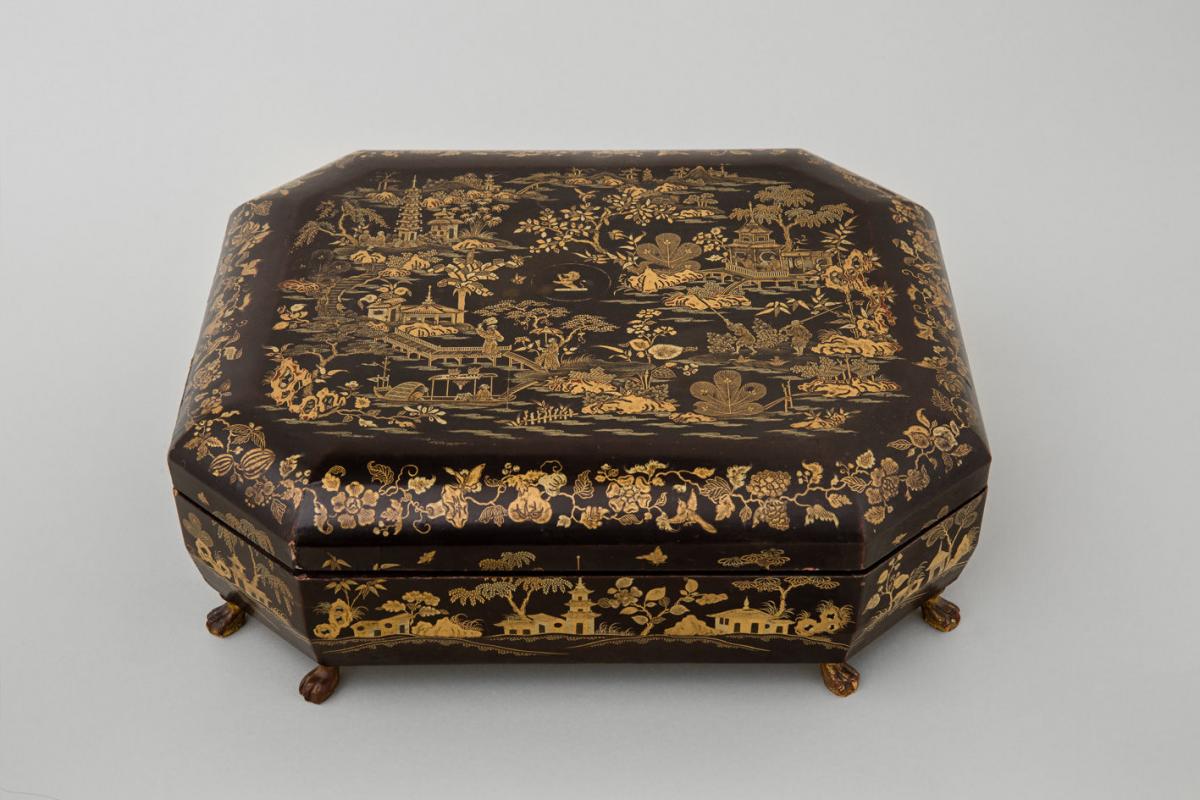
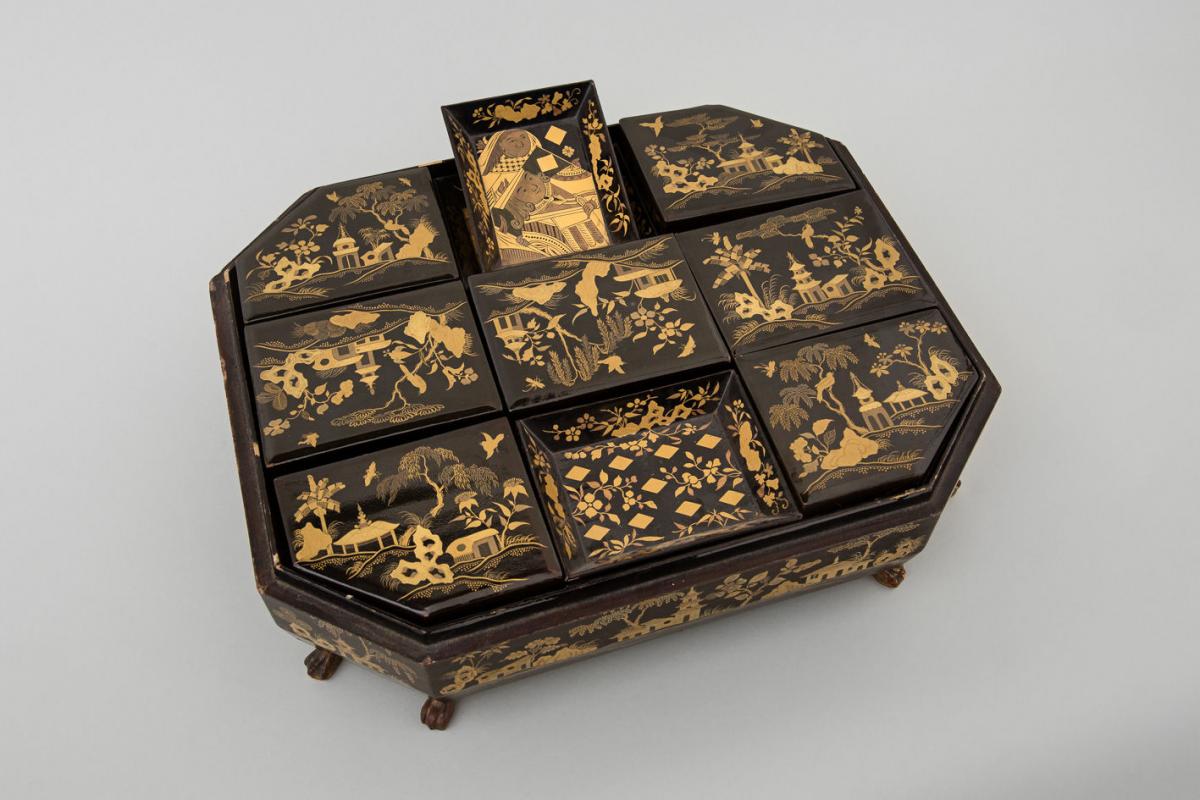
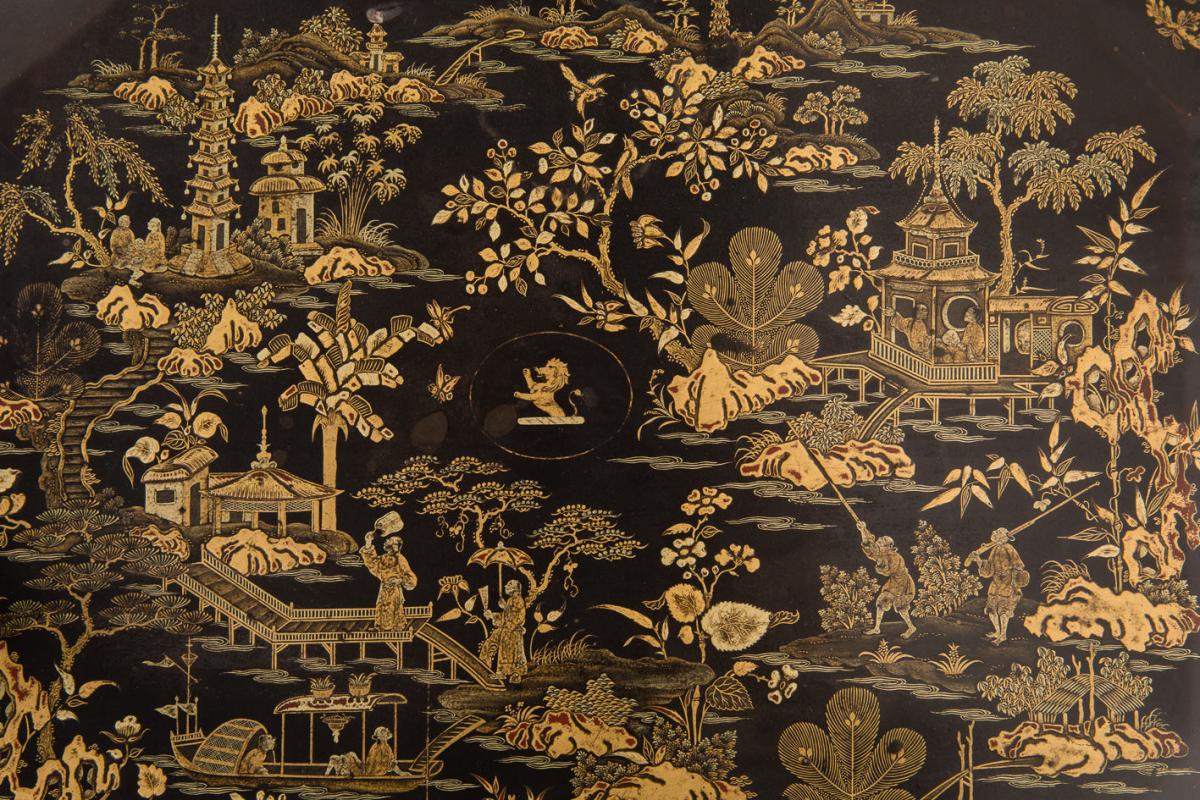
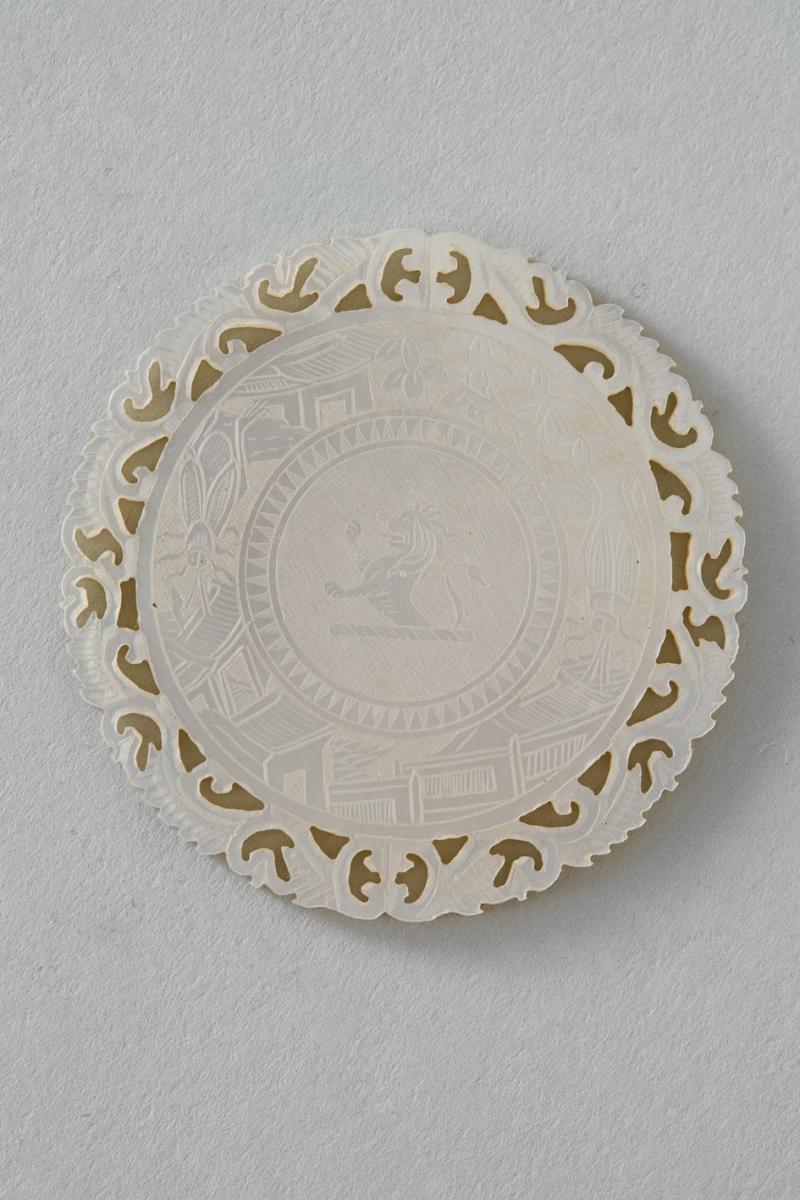
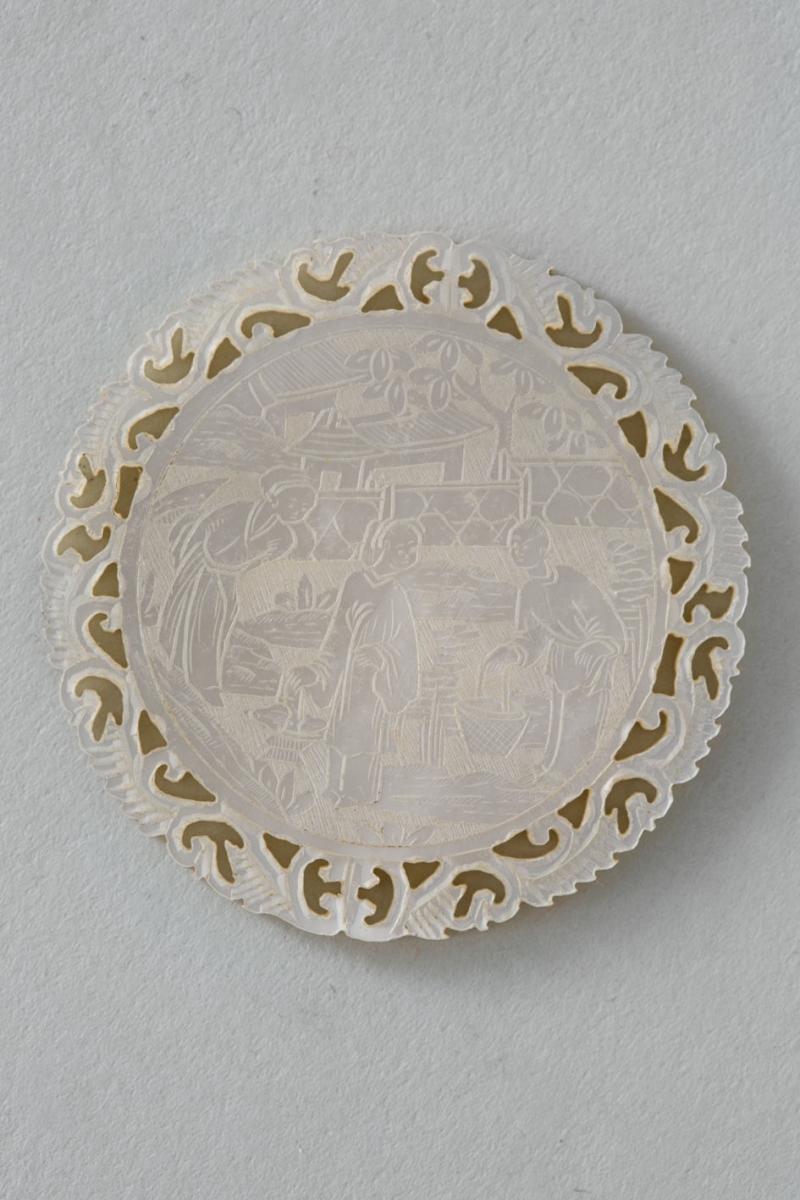
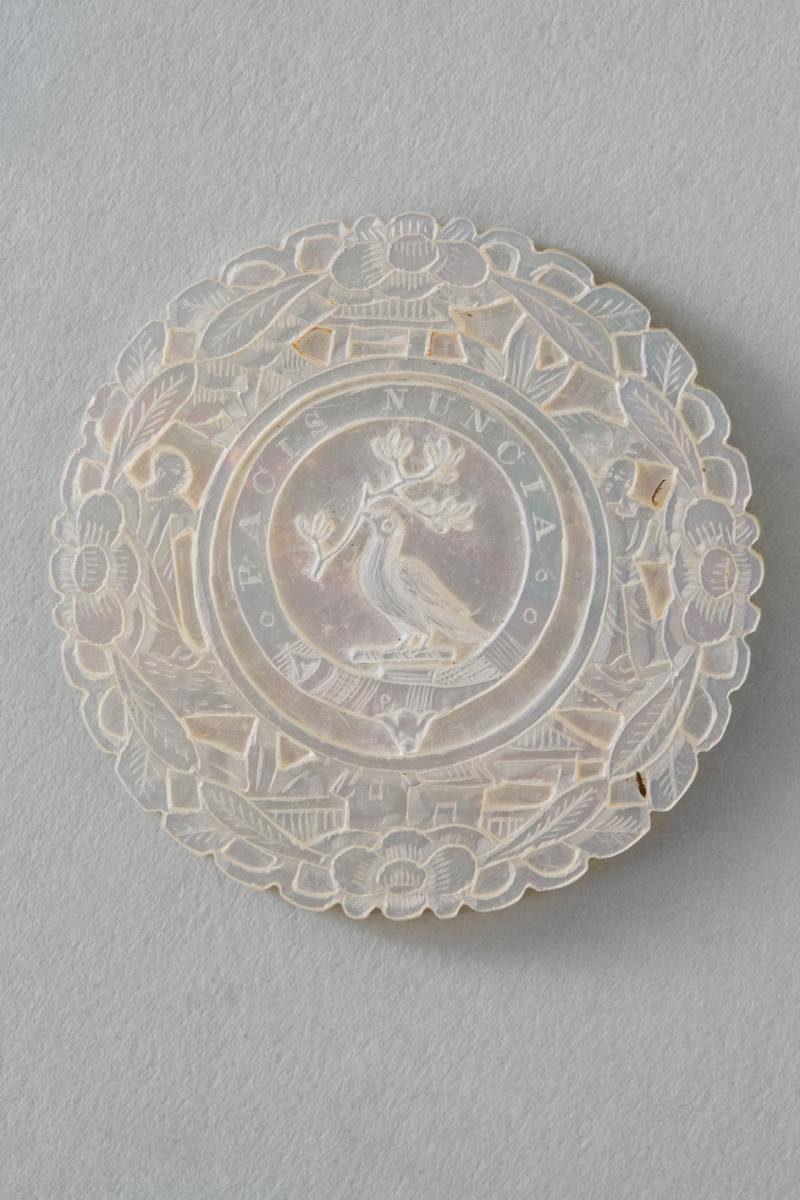
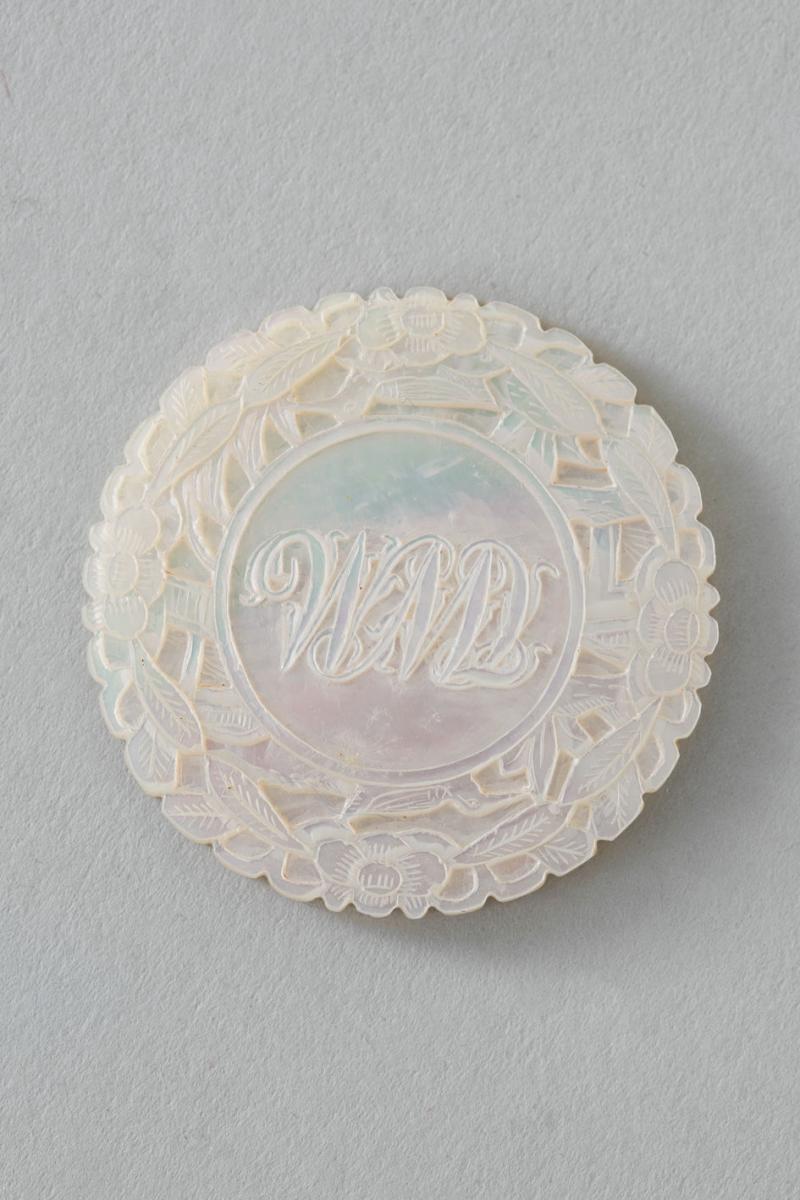
Price on application
This object is eligible for a Certificate of BADA Provenance
The BADA Standard
- Since 1918, BADA has been the leading association for the antiques and fine art trade
- Members are elected for their knowledge, integrity and quality of stock
- Our clients are protected by BADA’s code of conduct
- Our dealers’ membership is reviewed and renewed annually
- Bada.org is a non-profit site: clients deal directly with members and they pay no hidden fees
30 round, 18 square and 80 rectangular finely carved mother of pearl counters with individually fretted and pierced leaved borders, detailed with a crest on one side containing a demi-lion rampant within a detailed border, surrounded by scenes with either two dogs, a dog and a crane or two birds, all set amongst low buildings, the reverse with well carved scenes of Chinese life.
Together with a large lacquer box of long, octagonal shape, sitting on eight feet shaped as lion’s paws, extremely finely decorated in lighter and darker shades of gilding, with iron-red detailing, the cover painted in the centre with a crest containing the same demi-lion rampant as on the matching mother of pearl counters, surrounded by an elaborate seascape of several islets, some connected by low bridges, some with exquisitely detailed pagodas and follies, an array of trees including pine, plantain, bamboo and willow, further grasses, shrubbery and stylised rockwork scattered throughout, the scene populated with a multitude of figures at various pursuits; two seated in a low boat, a small ladder from the boat connecting it to an island, two figures on the approach to a bridge, one carrying a parasol, two figures seated under a willow tree next to a tall pagoda, a further two figures in conversation on the balcony of a folly and finally two male figures in short trousers, carrying long rifles, one aiming at a pair of song-birds perched high up in the branches of a tree, around the rim of the cover a border of scrolling fruits, vegetables and flowers including; pumpkin, melons, peaches, lilies and roses with finely detailed birds and butterflies flying or perched amongst the branches, the sides of the box decorated with low buildings, pagodas and trees continuing onto the short sides of the cover, the inside of the box with seven fitted boxes, the covers decorated with pagodas and trees, birds and butterflies, the sides painted with flowers, also in the box twelve trays, one painted to the centre with the word ‘Game’ amongst flowers and butterflies, three painted with court cards depicting the jack of diamonds, the queen of diamonds and the king of diamonds, one with nine of diamonds and another with the ace of diamonds amongst flowers, fruiting branches, stylised rock-work and birds, two with an unusual decoration of a queen of diamonds behind a screen of either the king of diamonds or the jack of diamonds, a further four trays with flowers, stylised rockwork, butterflies and finger-citrus ‘Buddha’s hand’.
Period: 19th Century
Also included in the box are two full sets of playing cards from De La Rue & Co London, one pack dating to about 1860-1870, the other to around 1890-1900.
Footnote:
The trays painted with court cards were integral to the games played where the players wagered on the various cards shown on the trays.
Thomas de la Rue introduced letter-press printing and certain other ‘improvements’ into playing card production and was granted a patent in 1831. He produced his first playing cards in 1832 and over the years came to be recognized as the inventor of the modern English playing card.
To begin with the Ace of Spades carried the duty of one shilling at the top and had the text "By His Majesty's Royal Letters Patent" printed at the bottom which had been granted to Thomas de la Rue by King William IV for 'certain improvements in making or manufacturing and ornamenting playing cards.' The Aces of Spades were printed in the Stamp Office at Somerset House and an account of the numbers of Aces was kept there by the authorities.
The reduction of Playing Card duty from one shilling to threepence in 1862 led to expansions in playing card sales, and no doubt new players were tempted to enter the market. Manufacturers, in general, began taking pride in the quality and elegance of their designs, so as to attract the best clientèle, and from this time onwards special personalized Aces of Spades were designed.
Dimensions
Length: 37cm; 14 ½ in Width: 31 cm; 12 ¼ inStock number
BA11The BADA Standard
- Since 1918, BADA has been the leading association for the antiques and fine art trade
- Members are elected for their knowledge, integrity and quality of stock
- Our clients are protected by BADA’s code of conduct
- Our dealers’ membership is reviewed and renewed annually
- Bada.org is a non-profit site: clients deal directly with members and they pay no hidden fees


